Portrait of Louis XV, Atelier Van Loo, Private collection of Castle of Saint Bonnet Les Oules, France
The conservation-restoration work is being done on a voluntary basis. The amount of the donations previously collected have been put together in a global fund for the three ongoing projects in order to be able to start the work on the three works.
Help us help them !
Financial cost of taking care of the work :
Financed
Thanks to the support of anonymous patrons
Help us help them !
Financed
Help us help them !
Financed

Identification
Item : Oil on canvas
Subject : Portrait of Louis XV in armor
Technique : Oil
Nature of the support : Canvas (on stretcher)
Signature : unsigned – estimated Atelier de Van Loo
Era : 18th century
Dimensions : 81 x 65 cm
Former Restoration interventions : 1960’s
Place of conservation : Castle of Saint-Bonnet-les-Oules (42, France)
Owner : Madame de Rocquigny
Review date : March 09, 2020
Muses & A.R.T. was contacted by Ms de Rocquigny, owner of the castle of Saint Bonnet les Oules in Loire, France, about several paintings. In the large salon of the castle are six portraits, four of which come from the studio of Louis-Michel Van Loo. These last paintings, including the portrait of King Louis XV which is the subject of this file, were already present in the castle when it was purchased in 1782. They are part of the historic place.
The portrait of Louis XV is an official portrait. It was customary for all noble families in the 18th century to possess the portraiture of the King and present it in their castles. This portrait made by the Van Loo workshop (1707-1771) is visible identically at the Lambinet Museum in Versailles. Stolen from the castle of Saint Bonnet les Oules in 1972 with another painting, it was found and recognized by Father Galo, Curator-Restorer of Saint Etienne. The Rocquigny family had it restored by the workshops of the Louvre at the beginning of the 20th century.
CONDITION REPORT
Constituents examination
The support is a canvas not visible because doubled by a lining applied with colletta glue during an old restoration intervention. The two canvases are stretched on a chamfered wooden stretcher with keys and crosswise members. The original stretcher was changed during the last restoration to a new stretcher.
A label pasted on the top wooden member reads partially decryptable handwritten inscriptions: “1804 +…”. And on the kraft paper on the border handwritten inscriptions are readable: “PV 118”.
The pictorial layer consists of a fine, clear and porous ground, and a fine colored layer with oil composed of multiple glazes and paint smears.
The fairly homogeneous varnish, applied during the last restoration, is composed of soft resins dissolved in gasoline.


Alterations examination
The painting shows alterations that testify to a wide cleavage between the pictorial layer and its canvas support.
Numerous cupping liftings are visible in the lower part of the painting and scattered throughout the rest of the work. They caused gaps in the pictorial matter. They are to be put in connection with the use, at the previous restoration, of an overly tensor lining adhesive that would have been reactivated by the poor conditions of transport and storage (theft and conservation outside the castle). The paste glue used, glue based on animal and vegetable material (colletta), reacted to the variations in temperature and especially humidity suffered during these various unsecured movements.
Despite these failures, and although the lining is very tense, the adhesion between the two canvases is still correct and will not require treatment.
Many inpaintings carried out during the last restoration, dot the painting and are visible to the naked eye, hindering in places the good legibility of the subject.
The varnish is slightly oxidized and has lost its transparency and protective role.
TREATMENT PROPOSALS
Conservation Operations
The pictorial layer of the work presents many loose paint. The first operation carried out on site consists in covering the work with a paper and an adhesive resistant to mechanical stresses. This facing will ensure its protection during transport and will avoid the loss of pictorial material.
A global consolidation of the pictorial layer must then be carried out to strengthen its adhesion to the canvas support, flatten the cup-like formations and avoid any loss of material during the restoration work that will follow. The consolidation will be carried out with a heat-activated synthetic adhesive.
The cleaning of the back of the canvas will allow the removal of dirt and other debris that can, in the long run, attack the cellulose of the textile fibers.
Restoration Operations
The oxidized varnish will be lightened by thinning its surface layers. At the same time, old inpaintings that are no longer integrated will be removed.
A fill-in medium will then be used in the lacunas to create a homogenous surface that will allow a clean and even surface for retouching and provide a continuity of structure with the pictorial layer surrounding these gaps. This will then be followed by the colorful reintegration of the gaps : it allows the legibility of the work and participates in an “aesthetic” rendering. The retouching will be illusionist, i.e. not discernible from the original colored layer.
A final varnish will then be set to protect the original colored layer and the retouches made. This final varnish has an aesthetic and protective role. Based on synthetic resin and gasoline, it will guarantee transparency and protection to the artwork against environmental aggressions.
